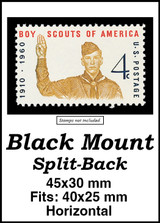
U.S. #798
1937 3¢ Constitution Sesquicentennial
Issue Date: September 17, 1937
First City: Philadelphia, PA
Quantity Issued: 99,882,300
Based on the same principles as the Declaration of Independence, the Constitution of the United States provides for a system of checks and balances among the three branches of the governme... more
U.S. #798
1937 3¢ Constitution Sesquicentennial
Issue Date: September 17, 1937
First City: Philadelphia, PA
Quantity Issued: 99,882,300
Based on the same principles as the Declaration of Independence, the Constitution of the United States provides for a system of checks and balances among the three branches of the government.
The Birth of the United States Constitution
The Constitutional Convention was held in Independence Hall in Philadelphia, Pennsylvania. The convention was supposed to open on May 4, 1787, but very few delegates had arrived by that time.
On May 25th, the convention officially opened. Twelve states sent representatives – Rhode Island did not wish to have a national government. On September 17, 1787, 39 of the 55 delegates signed the United States Constitution. Less than three months later, Delaware became the first state to ratify the document, and other states soon followed.
However, North Carolina and Rhode Island refused to approve the Constitution until amendments protecting the rights of all people were added. As a result, 10 amendments, known as the Bill of Rights, were added to the Constitution on December 15, 1791.
The U.S. Constitution establishes our nation’s fundamental laws. It creates the form of the national government, and defines the rights and liberties of the American people. It also determines the goals of the U.S. government and how they should be achieved.
Death Of Noah Webster
On May 28, 1843, author and lexicographer Noah Webster died in New Haven, Connecticut.
Noah Webster, Jr., was born on October 16, 1758, in Hartford, Connecticut. He came from a family of governors, though his father was a farmer, captain in the town militia, and founder of the local book society.
When he was young, Webster’s mother taught him and his siblings spelling, math, and music. He then attended a one-room primary school where they focused on religion. His negative experiences there would inspire him to work to improve the educations of future generations.
Webster went on to attend Yale College and serve with the Connecticut Militia during the Revolutionary War. After graduating in 1778, he briefly taught before studying law under future U.S. Supreme Court Justice Oliver Ellsworth. After passing the bar he couldn’t find work as a lawyer because the war was still raging, so he opened a small private school in western Connecticut. He eventually closed the school and turned to writing. Webster found new success as an author, writing popular articles in favor of the revolution and separation from England.
Webster then opened another private school where he got funding to write spelling and grammar books for elementary schools. Meanwhile, he also became a vocal supporter of the new Constitution, publishing a pamphlet titled, “An Examination into the Leading Principles of the Federal Constitution Proposed by the Late Convention Held at Philadelphia.” Then in 1793 Alexander Hamilton invited him to New York City to edit the Federalist Party newspaper. There Webster founded New York’s first daily newspaper, American Minerva, for which he wrote about 20 volumes worth of articles and editorials. He also published a semi-weekly paper.
Over the years Webster became a noted American author, producing textbooks (notably the blue-backed speller), political essays, and a report on infectious diseases. He was also a leading proponent of the Copyright Act of 1831.
Webster was specifically noted for his “Blue-Backed Speller,” known then as The First Part of the Grammatical Institute of the English Language. It was the most popular American book of its time and helped to inspire spelling bee contests. Over 385 editions were released in his lifetime. In his speller, Webster changed the spellings to more phonetic ones and changed the ‘re’ to ‘er’ in words such as center. His goal was to move away from the British form of spelling to a new American style.
Webster produced his first dictionary in 1806. It wasn’t the first American dictionary – Samuel Johnson, Jr., published one in 1798 – but Webster’s work had the much greater impact. It helped standardize American pronunciation. Although he thought of it as a preliminary work, it was the finest dictionary of its time. Over the next 20 years, he worked to expand his dictionary. In 1828, he published his American Dictionary of the English Language. The two-volume dictionary had 70,000 entries that included literary words plus technical terms from the arts and sciences.
Webster’s dictionary sold poorly, just 2,500 copies at the time. He worked for several years on a second edition, published in 1840. Three years later, as he was revising an appendix to the second edition, he died on May 28, 1843. George and Charles Merriam acquired the rights to his dictionary that same year, leading the recognized Merriam-Webster dictionaries of later years. Today, Webster’s Dictionary is the standard resource material for word definitions and reference.
LessRelated Items

#837
1938 3c Northwest Territory Sesquicentennial

#727
1933 3c Peace of 1783 Sesquicentennial

#752
1935 3c Peace of 1783 Sesquicentennial

#799
1937 3c Hawaii

Most Orders Ship
within 1 Business Day
90 Day Return Policy
Satisfaction Guaranteed
Earn Reward Points
for FREE Stamps & More



